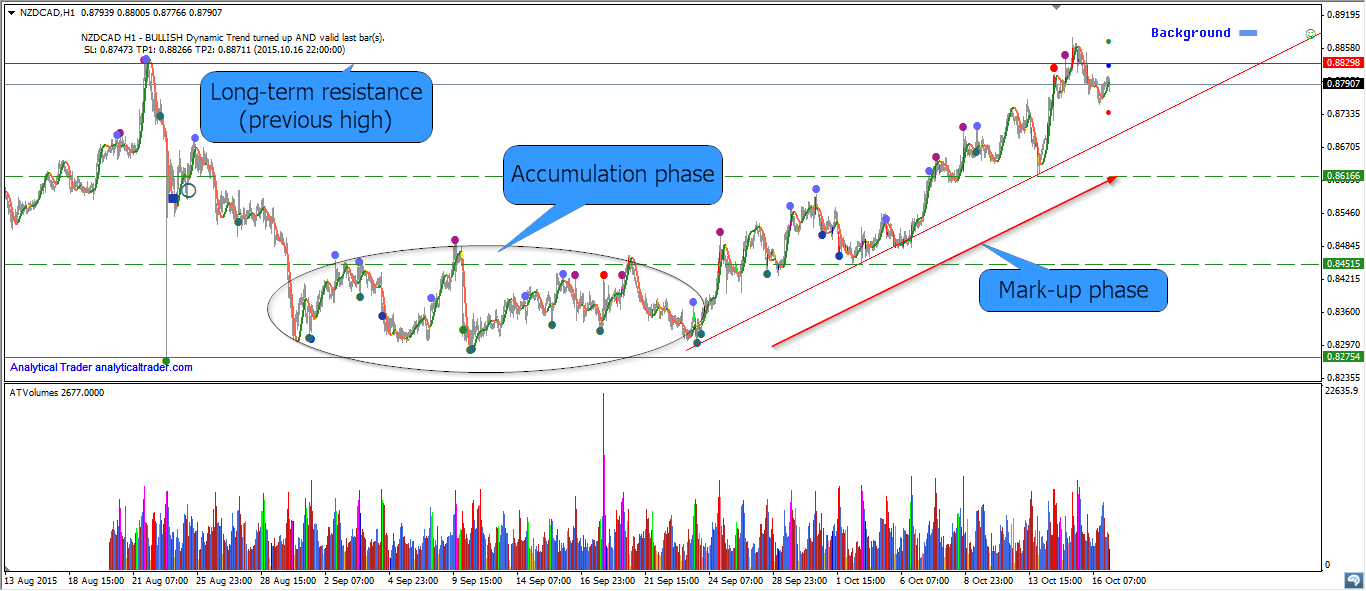
All price movements in forex can be divided in 4 phases:
- Accumulation
- Mark-up
- Distribution
- Mark-down
Accumulation means to buy as much of positions as possible, without significantly putting the price up against your own buying. This buying usually happens after a substantial bear move has taken place. To the professional traders, the lower prices now look attractive. Once the smart money has completed accumulation, there will be no resistance to higher prices – this is a start of bull market (mark-up). Once a bullish move starts, it will continue without resistance, as the supply has now been removed from the market.
A Bull Market occurs when there has been a substantial transfer of stock from Weak Holders to Strong Holders, generally, at a loss to Weak Holders.
Distribution phase is the same, only it happens after a substantial bull move and professionals are selling as much of positions as possible. Once the smart money has completed distribution, there will be no resistance to lower prices – this is a start of bear market (mark-down).
A Bear Market occurs when there has been a substantial transfer of stock from Strong Holders to Weak Holders, generally at a profit to the Strong Holders.
In NZD/CAD, we see clear indication of accumulation phase at the bottom of market and later mark-up phase. Now the price has come to the long-term resistance (previous high). Often this may be the point where the price changes its direction. Look for distribution phases on the top of the market.
